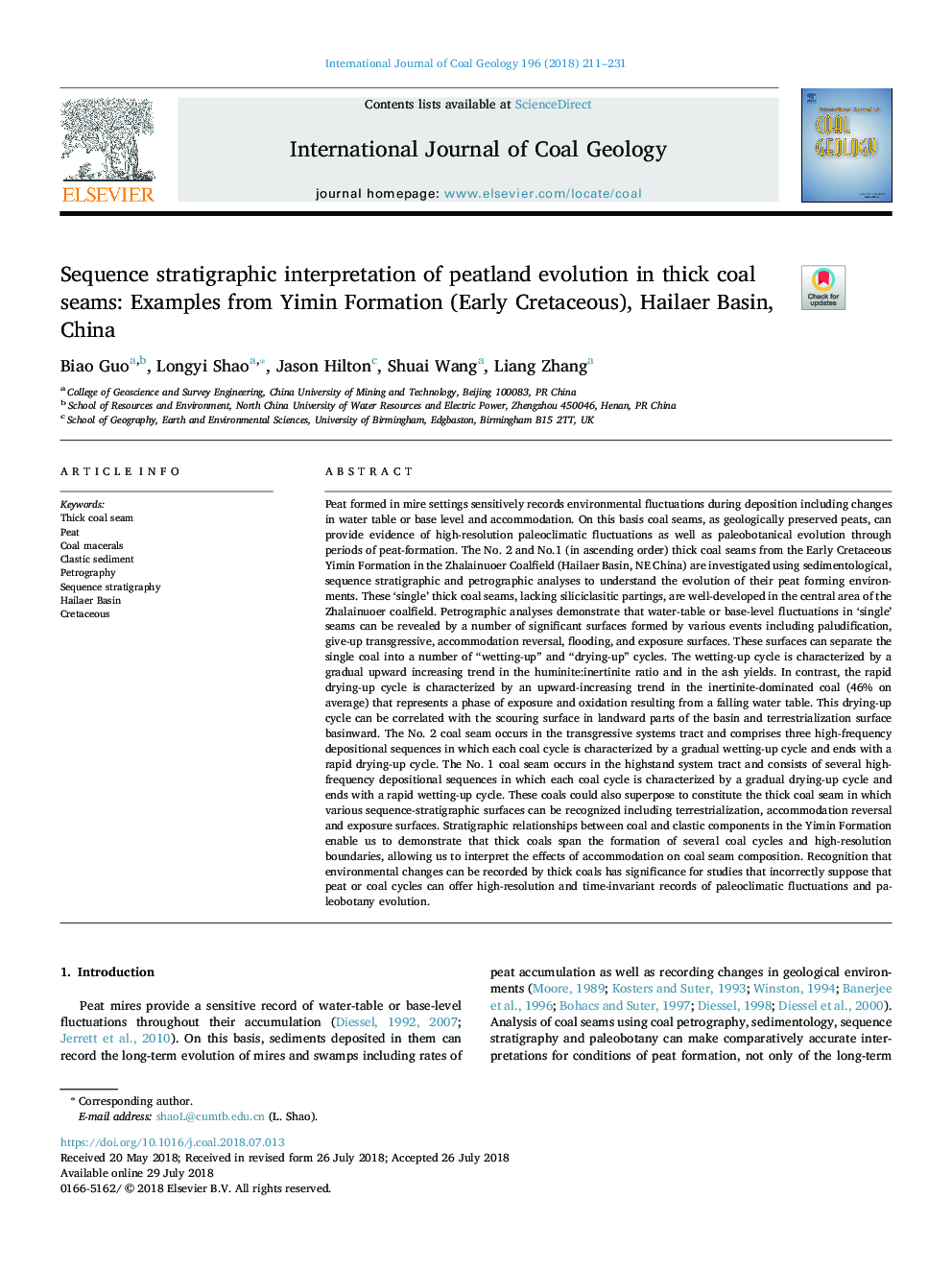| کد مقاله | کد نشریه | سال انتشار | مقاله انگلیسی | نسخه تمام متن |
|---|---|---|---|---|
| 8123280 | 1522507 | 2018 | 21 صفحه PDF | دانلود رایگان |
عنوان انگلیسی مقاله ISI
Sequence stratigraphic interpretation of peatland evolution in thick coal seams: Examples from Yimin Formation (Early Cretaceous), Hailaer Basin, China
دانلود مقاله + سفارش ترجمه
دانلود مقاله ISI انگلیسی
رایگان برای ایرانیان
کلمات کلیدی
موضوعات مرتبط
مهندسی و علوم پایه
علوم زمین و سیارات
زمین شناسی اقتصادی
پیش نمایش صفحه اول مقاله

چکیده انگلیسی
Peat formed in mire settings sensitively records environmental fluctuations during deposition including changes in water table or base level and accommodation. On this basis coal seams, as geologically preserved peats, can provide evidence of high-resolution paleoclimatic fluctuations as well as paleobotanical evolution through periods of peat-formation. The No. 2 and No.1 (in ascending order) thick coal seams from the Early Cretaceous Yimin Formation in the Zhalainuoer Coalfield (Hailaer Basin, NE China) are investigated using sedimentological, sequence stratigraphic and petrographic analyses to understand the evolution of their peat forming environments. These 'single' thick coal seams, lacking siliciclasitic partings, are well-developed in the central area of the Zhalainuoer coalfield. Petrographic analyses demonstrate that water-table or base-level fluctuations in 'single' seams can be revealed by a number of significant surfaces formed by various events including paludification, give-up transgressive, accommodation reversal, flooding, and exposure surfaces. These surfaces can separate the single coal into a number of “wetting-up” and “drying-up” cycles. The wetting-up cycle is characterized by a gradual upward increasing trend in the huminite:inertinite ratio and in the ash yields. In contrast, the rapid drying-up cycle is characterized by an upward-increasing trend in the inertinite-dominated coal (46% on average) that represents a phase of exposure and oxidation resulting from a falling water table. This drying-up cycle can be correlated with the scouring surface in landward parts of the basin and terrestrialization surface basinward. The No. 2 coal seam occurs in the transgressive systems tract and comprises three high-frequency depositional sequences in which each coal cycle is characterized by a gradual wetting-up cycle and ends with a rapid drying-up cycle. The No. 1 coal seam occurs in the highstand system tract and consists of several high-frequency depositional sequences in which each coal cycle is characterized by a gradual drying-up cycle and ends with a rapid wetting-up cycle. These coals could also superpose to constitute the thick coal seam in which various sequence-stratigraphic surfaces can be recognized including terrestrialization, accommodation reversal and exposure surfaces. Stratigraphic relationships between coal and clastic components in the Yimin Formation enable us to demonstrate that thick coals span the formation of several coal cycles and high-resolution boundaries, allowing us to interpret the effects of accommodation on coal seam composition. Recognition that environmental changes can be recorded by thick coals has significance for studies that incorrectly suppose that peat or coal cycles can offer high-resolution and time-invariant records of paleoclimatic fluctuations and paleobotany evolution.
ناشر
Database: Elsevier - ScienceDirect (ساینس دایرکت)
Journal: International Journal of Coal Geology - Volume 196, 1 August 2018, Pages 211-231
Journal: International Journal of Coal Geology - Volume 196, 1 August 2018, Pages 211-231
نویسندگان
Biao Guo, Longyi Shao, Jason Hilton, Shuai Wang, Liang Zhang,